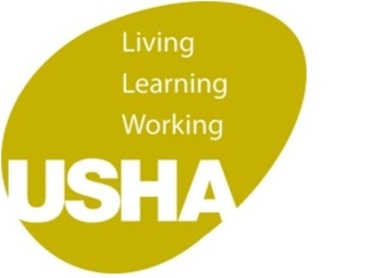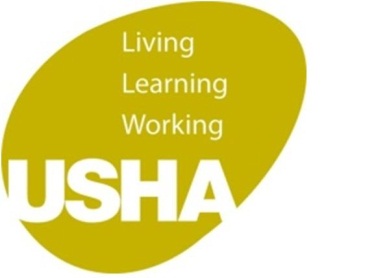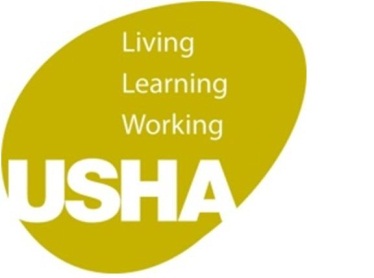Information
-
Health and Safety Termly Systems Audit
-
Westminster Kingsway College
-
Client / Site
-
Conducted on
-
Derek Wilkinson
-
Location
-
Personnel
1. PREVIOUS AUDIT - ISSUES ARISING
-
1.1 Issues arising from last audit have been resolved? If not give details
2. POLICY
-
2.1 Is there a health and safety policy authorised by the Principal and Chair of Governors, clearly stating the overall health and safety objectives and demonstrating a commitment to improving performance?
-
2.2 Is this policy:
-
a) appropriate to the nature and scale of the organisation's health and safety risks?
-
b) including the commitment to ensure continued improvement aimed at elimination of work-related injury and illness?
-
c) Includes
-
c) including a commitment to comply with relevant health and safety legislation and best practice.
-
d) documented, implemented, maintained and communicated to all employees?
-
e) available to interested parties?
-
f) reviewed periodically to ensure it remains relevant and appropriate to the organisation?
-
g.) including supporting policies and procedures which are also regularly reviewed and kept up to date?
-
Evidence for the above is :
-
Health and Safety Policy, associated policies and procedures, filed on the cross-college drive and available to view on the college intranet
3. PLANNING
3.1 Planning identification of Hazards, Hazard/Risk Assessment and Control of Hazards/Risks
-
3.1.1. Have procedures been established, implemented and maintained for hazard identification and risk control ?
-
3.1.2. Has the methodology for risk management and control been developed and evolved taking account of operational factors, near miss incidents etc.
-
3.1.3. Is this methodology regularly reviewed and updated?
-
Evidence for the above is :
-
System of risk assessment in place and used, reviewed with departments periodically, near misses recorded and taken account of in risk management planning
3.2 Legal and other requirements
-
3.2.1. Are legal requirements taken account of in the the planning and implementation of its activities and operations?
-
3.2.2. Is this information kept up-to-date and are updates communicated to employees as needed?
-
Evidence for the above is :
-
Central information database with up to date legal information, active updates from Barbour and the British Safety Council, updates to health and safety committee.
3.3 Objectives and Targets
-
3.3.1. Have general objectives been set and are these being achieved or worked towards ?
-
3.3.2 Are the objectives as set consistent with legal requirements and do they anticipate impending legal and regulatory changes where needed?
-
3.3.3. Are the objectives and targets consistent with the Health and Safety Policy?
-
3.3.4 Are the objectives consistent with a policy of continuous improvement?
-
Evidence for the above is :
-
Health and safety committee minutes, centre health and safety operational group meetings, annual reviews and audits
3.4 Management Plans
-
3.4.1. Has the organization established and maintained management plans for achieving its objectives and targets?
-
3.4.2. Has a designation of responsibility for achievement of objectives and targets been set at different levels in the organisation?
-
3.4.3 Have means and outline timeframes been set by which objectives and targets are to be achieved?
-
3.4.4 Are arrangements in place for plans to be reviewed and revised as necessary as circumstances change?
-
Evidence for the above is :
-
Action planning from health and safety committee, centre health and safety operational group meetings, annual reports and reviews including annual report to the Corporation.
4. IMPLEMENTATION
4.1 Structure and Responsibility
-
4.1.1. Is structure and responsibility for implementation clearly established?
-
Evidence for the above is :
-
Health and safety policy and supporting policies and procedures, management organisational charts, annual reports, reviews and action plans.
4.2. Resources
-
4.2.2. Has management identified and provided the resources required to implement, maintain, and improve health and safety management systems ? (Resources such as human resources, and specialized skills, technology and financial resources)
-
Evidence for the above is :
-
Staff with assigned health and safety responsibilities, organisational, training matrix and lists of H&S trained staff, health and safety budget.
4.3. Responsibility and Accountability
-
4.3.1. Is accountability and responsibility clearly defined, documented and communicated?
-
4.3.2. Is accountability and responsibility clarified with respect to contractors?
-
4.3.3. Is a director appointed to be responsible for ensuring legal and regulatory compliance for all health and safety operations?
-
Evidence for the above is :
-
Health and safety policy, organisational charts, training records, appointed director, TFM (KFM) contractor health and safety policy agreed with WKC, TFM (KFM) contract.
4.4.Training and Competency
-
4.4.1. Have training needs been identified, in consultation with employees, in support of healthy and safe operations, and implemented ?
-
4.4.2. Are procedures in place to ensure that health and safety competencies are developed and maintained?
-
4.4.3. Are personnel assessed as competent on the basis of education, training or experience, to perform assigned tasks safely?
-
4.4.4. Do training arrangements take account of the skills and competencies of staff weighed against the hazards and risks they may encounter?
-
4.4.5 Is it ensured that all personnel (including contractors and visitors) have undertaken training appropriate to the needs identified?
-
4.4.6. Is this training carried out by persons with appropriate knowledge, skills, experience and training?
-
Evidence for the above is :
-
Training matrix, rolling training plan regularly reviewed by health and safety committee and training needs discussed by centre ops groups. All staff carry out compulsory online health and safety training at induction and this is regularly refreshed. Contractor induction and training arrangements regularly reviewed.
4.5. Consultation, Communication and Reporting
4.5.1.Consultation
-
4.5.1.1.Have the employees:
-
a) been involved in the development, implementation and review of policies and procedures to identify hazards and assess and control hazards/risks?
-
b) been consulted where there are any changes that affect workplace health and safety
-
c) selected those who will represent them on health and safety matters
-
d) are aware of the employee health and safety representative(s) and specified management representatives?
-
4.5.1.2. Are there documented procedures for employee involvement and consultation in health and safety issues?
-
4.5.1.3. Are those representing the employees and employer receiving appropriate training to undertake effectively, their involvement in the development, implementation and review of health and safety arrangements?
-
Evidence for the above is :
-
Input at health and safety committee meetings and centre health and safety operational groups. Trades union representation at these groups and in attendance during site safety inspections. It is a matter of policy that consultation with employees takes and there is a separate policy statement. Assistance given by college with training.
4.5.2 Communication
-
4.5.2.1 Pertinent information is communicated to and from employees and other interested parties?
-
Evidence for the above is :
-
Reports to health and safety committee and centre health and safety operational groups. Updates from external information sources selectively distributed to staff and stakeholders. Articles published on staff intranet.
4.5.3 Reporting
-
4.5.3.1. Are appropriate reporting procedures in place?
-
Are reporting procedures established to cover the following:
-
a) Health and safety performance including audits, inspections, reviews?
-
b) Near miss incidents and system failures
-
c) Hazard identification
-
d) Risk assessment
-
e) Preventative and corrective actions
-
f) Statutory reporting requirements
-
Evidence for the above is :
-
Regular reports to the health and safety committee and centre health and safety operational groups. Annual and termly reports to governors. Ad hoc reports to individuals, stakeholders, staff and student groups, and regulatory authorities as required.
4.6. Documentation
-
Is information provided in a suitable medium such as print or electronic form to:
-
a) describe the core elements of the management system and its interaction?
-
b) provide direction to related documentation?
-
Evidence for the above is :
-
Information available via a range of media with the aim of reaching as wide an audience as possible. The use of links in electronic documentation assists the communication process.
4.7 Document and Data Control
-
4.7.1. Are all relevant documents and data established and presented to ensure that:
-
a) they can be readily located?
-
b) they are periodically reviewed, revised as necessary by competent and responsible personnel?
-
c) current versions of relevant documents and data are available at all locations as needed?
-
d) obsolete documents and data are promptly removed from all points of issue and use or otherwise assured against unintended use?
-
e) archival documents and data retained for legal or knowledge preservation purposes or both, are suitably identified?
-
4.7.2. Is this documentation and data legible, dated (with dates of revision) and readily identifiable and maintained in an orderly manner for a specified period?
-
4.7.3. Are procedures and responsibilities established and maintained concerning the creation and modification of the various types of documents and data?
-
Evidence for the above is :
-
Held on central drive and published on the intranet. Old information sent to archive.
4.8. Hazard Identification, Hazard/Risk Assessment and Control of Hazards/Risks
4.8.1. General
-
4.8.1.1 Are documented procedures established and implemented to ensure that:
-
a) hazards are identified?
-
b) hazards/risks are assessed?
-
c) hazards/risks are controlled; and then
-
d) steps (a) to (c) are evaluated?
-
Evidence for the above is :
-
Accident reporting system with facilities for investigation and RIDDOR referral as necessary. Risk assessment carried out across the college. Risk scores assigned and residual controlled as required
4.8.2 Hazard Identification
-
4.8.2.1. Does the identification of hazards in the workplace take into account:
-
a) the situation or events or combination of circumstances that has the potential to give rise to injury or illness;
-
b) the nature of potential injury or illness relevant to the activity, product or service; and
-
c) past injuries, incidents and illnesses?
-
4.8.2.2. Does the identification process also include consideration of:
-
a) the way work is organised, managed, carried out and any changes that occur in this;
-
b) the design of workplaces, work processes, materials, plant and equipment;
-
c) the fabrication, installation and commissioning and handling and disposal (of materials, workplaces and plant and equipment);
-
d) the purchasing of goods and services;
-
e) the contracting and subcontracting of plant, equipment, services and labour, including contract specification and responsibilities to and by contractors; and
-
f) the inspection, maintenance, testing, repair and replacement (of plant and equipment).
-
Evidence for the above is :
-
Regular accident reports to health and safety committee. Near miss reporting follow up. Hazard elimination action following up from safety inspections. Discussion with main TFM contractor ref to safe working systems and procedures.
4.8.3. Hazard/Risk Assessment
-
4.8.3.1. Are all risks arising from hazards given a risk rating?
-
Evidence for the above is :
-
Severity x likelihood risk rating system consistently used.
4.8.4. Hazard/Risk Control
-
4.8.4.1. Are all risks controlled according to the hierarchy of control with elimination as the preferred control measure?
-
Evidence for the above is :
-
Hierarchy of control observed wherever reasonably practicable. Attention given to promoting elimination wherever possible.
4.8.5 Evaluation
-
4.8.5.1. Are hazard identification and risk control measures evaluated for effectiveness and modified as necessary?
-
Evidence for the above is :
-
Reviews with staff - individuals and groups - central database of risk assessments maintained and monitored. Templates, where used, are updated as necessary according to legislative, procedural or resource changes.
4.9 Emergency Preparedness and Response
-
4.9.1. Are all reasonably predictable potential emergency situations identified and procedures documented for preventing and mitigating associated illness and injury?
-
4.9.2. Have emergency preparedness and response procedures been reviewed and revised after the occurrence of incidents or emergency situations?
-
4.9.3. Are emergency procedures periodically tested? (NOTE: it may not be practicable to test some procedures, in which case training and efficacy should be tested by other means)
-
Evidence for the above is :
-
Reports in fire safety log, monitoring records of evacuation drills, fire risk assessment including action planning, disaster recovery plan.
5 MEASUREMENT AND EVALUATION
5.1 Monitoring and Measurement
5.1.1 General
-
5.1.1.1. Are there documented procedures to regularly monitor and measure the key causes of work related illness or injury?
-
5.1.1.2. Is the effectiveness and efficacy of these measures evaluated?
-
5.1.1.3. Is appropriate equipment for monitoring and measurement related to health and safety risks deployed as necessary, and maintained in good order?
-
5.1.1.4. Are procedures in place to monitor the performance, effectiveness and compliance of the health and safety management system?
-
Evidence for the above is :
-
Accident statistics. Breakdowns and trend reports for health and safety committee, near miss and incident reports. Record of non work-related illnesses. Measuring and monitoring equipment held maintained in central location.
5.1.2 Health Surveillance
-
5.1.2.1. Have situations where health surveillance may be required been identified and implemented as necessary?
-
Evidence for the above is :
-
Procedures in place for dealing with contagious disease outbreaks.
5.2 Incident Investigation, Corrective and Preventative Action
-
5.2.1.Has the organisation established, implemented and maintained procedures for:
-
a) investigating, responding to , and taking action to minimise any harm caused from incidents;
-
b) investigating and responding to system failures; and
-
c) initiating and completing appropriate corrective and preventative action.
-
5.2.2. Are procedural changes resulting from incident investigations and corrective and preventive action recorded?
-
Evidence for the above is :
-
Investigations recorded on centralised accident reporting system. Safety Inspections have monitoring and follow up built in where hazards are located.
5.3 Records and Record Management
-
5.3.1. Are procedures in place and maintained for health and safety, including the results of audits and reviews?
-
5.3.2. Are records legible, identifiable and traceable to the activity, product or service involved?
-
5.3.3. Are records stored and maintained ensuring that they are readily retrievable and protected against damage, deterioration and loss?
-
5.3.4. Are records maintained, as required by the college and relevant legislation?
-
5.3.5. Are their retention times established and recorded?
-
Evidence for the above is :
-
All records stored electronically on safe and secure database platforms. Hard copy records kept as appropriate. Categorised according to main regulatory and legislative categories.
5.4 External and Internal Audit
-
5.4.1. Is a programme of regular internal and external audits in place and maintained in order to:
-
a) determine whether the health and safety management system:
-
i) conforms to planned arrangements?
-
ii) has been properly implemented and maintained?
-
iii) is effective in achieving continual improvement according to policy objectives?
-
b) provide information on the results of audits to management and employees.
-
5.4.2. Does the audit program focus on health and safety priorities, taking account of the results of previous audits?
-
Evidence for the above is :
-
Internal inspections and audits recorded. External audits recorded.
6. MANAGEMENT REVIEW
-
6.1. Is the health and safety management system subject to review at directorate and governor level?
-
6.2. Have processes for enabling directors and governors to effectively review this information been established.
-
6.3. Does the management review reflect changing priorities due to changing business profile, legislation and regulation?
-
6.4. Does the management review consider ongoing resourcing implications using a prioritised risk-based approach?
-
6.5. Does the management review, in considering all determining factors, continue to promote and support a process of continuous improvement.
-
Evidence for the above is :
-
Reports to health and safety committee and Corporation - Termly and annual
-














